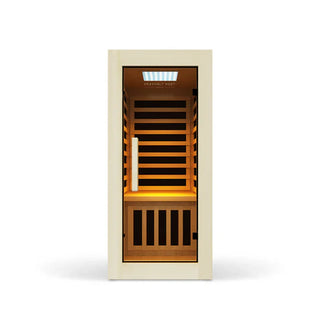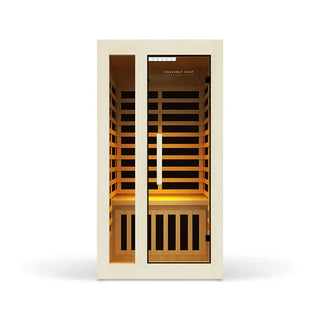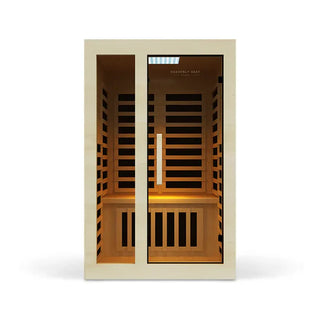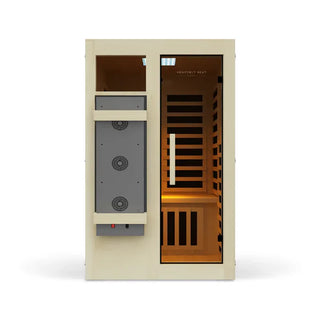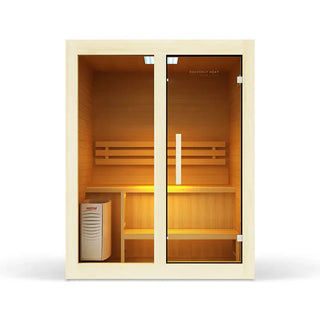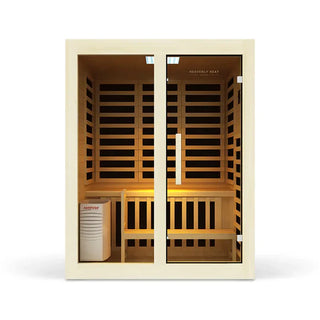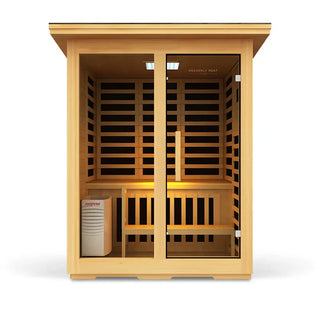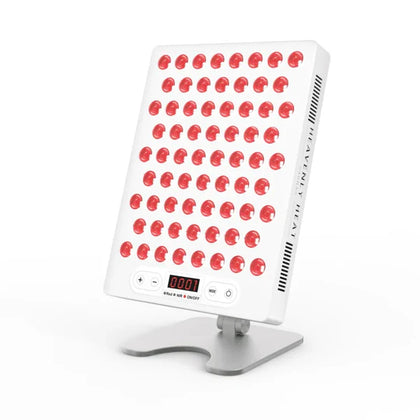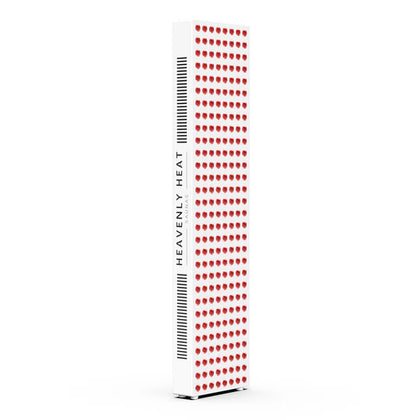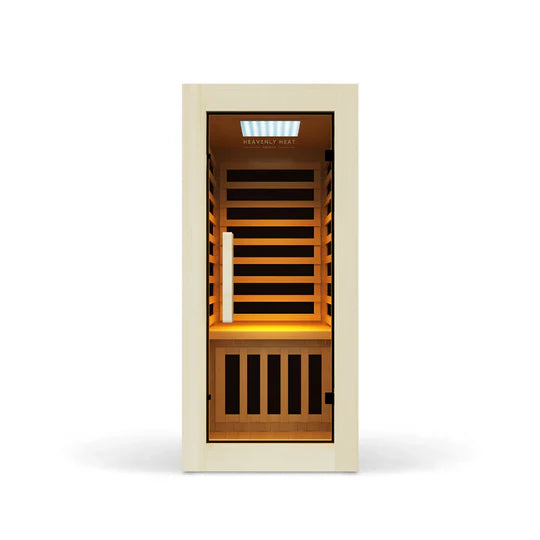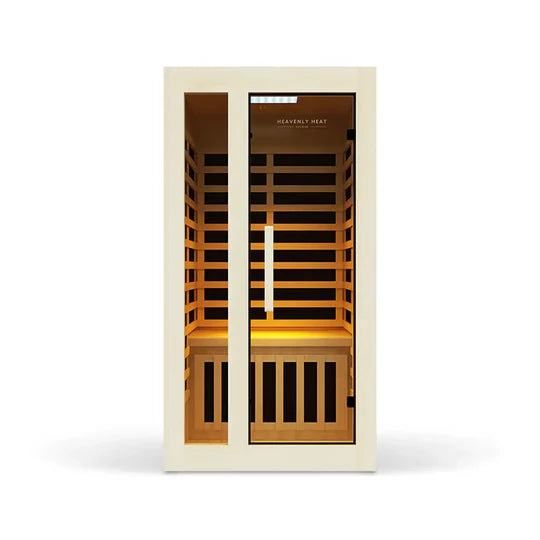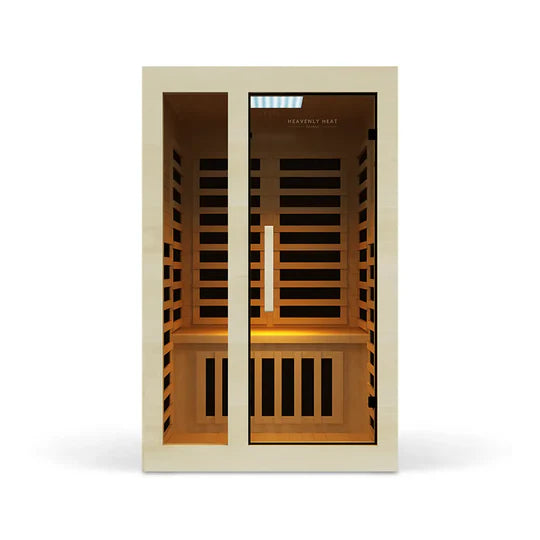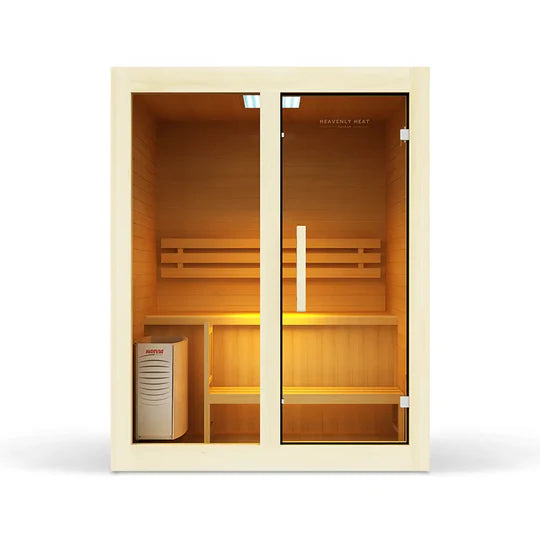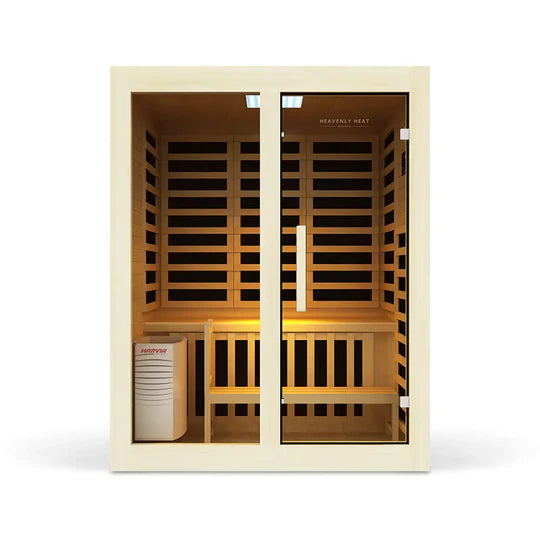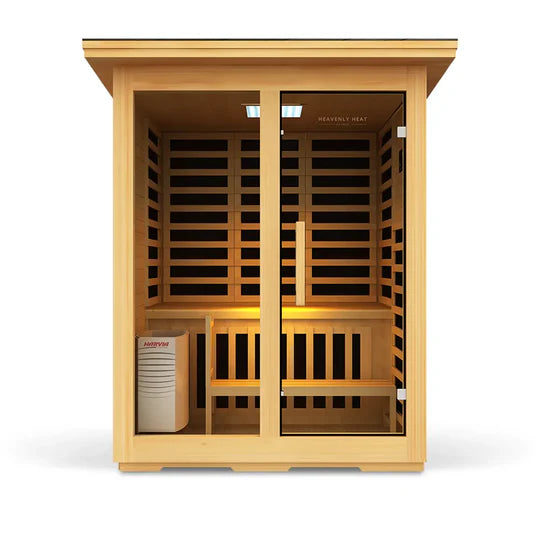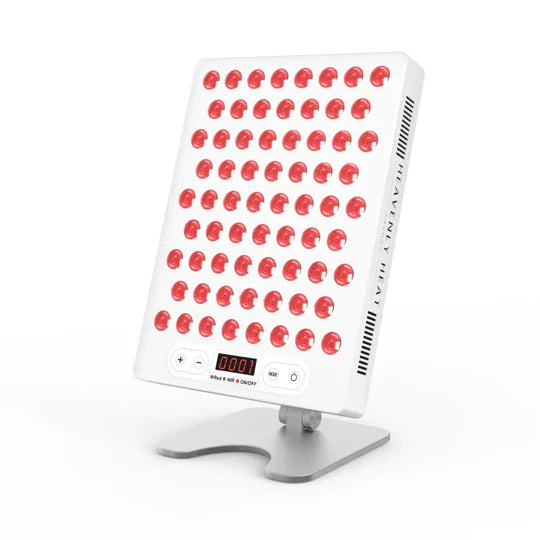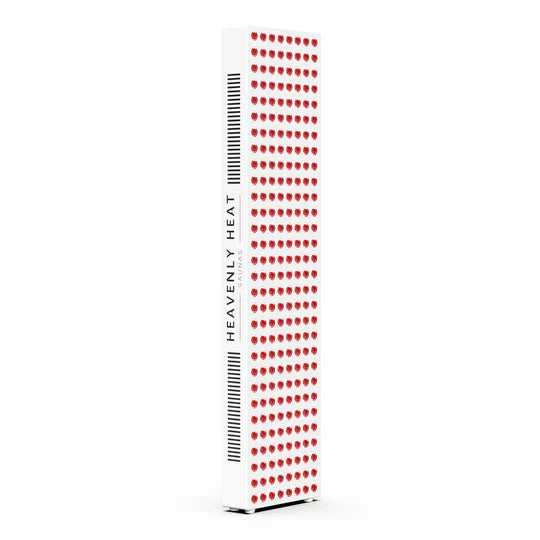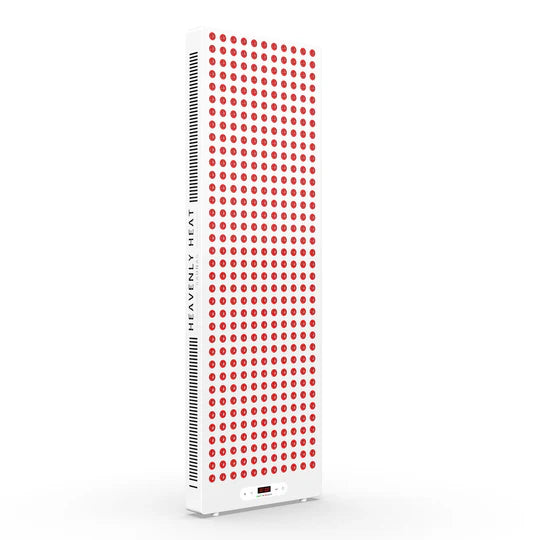Red Light Therapy Before or After Sauna: What’s Best for Your Health?

Want to boost skin health, ease inflammation, and enhance recovery? Red light therapy offers these benefits and more, but timing matters.
Should you use it before or after your sauna session? Many get this wrong, missing out on maximum results.
In this guide, we will break it down so you can optimize both therapies for the best possible health benefits.
Table of contents
Overview of Red Light Therapy and Infrared Sauna
- Red light therapy works without making your body feel hot: Red light therapy uses low-level red and near-infrared wavelengths that go into your skin to boost cell energy, reduce inflammation, and support collagen production, all without creating heat.
- It can help you sleep better and recover faster: According to a study , red light therapy can improve sleep, increase melatonin, and support physical recovery, especially in athletes. It also helps reduce signs of aging by improving skin quality.
- Different light colors go deeper into your skin: Another study found, The benefits of red light therapy depend on the color (or wavelength) of the light. Each color goes to a different depth in the skin and affects the cells in different ways.
- Infrared saunas use heat to make you sweat and relax: Infrared saunas heat your body from the inside out. This helps you sweat more, improve blood flow, relax deeply, and release toxins from your body.
- The biggest difference is heat, one uses it, the other doesn’t: Red light therapy uses light without heat, while infrared saunas rely on heat. This key difference means they affect your body in different but helpful ways.
- You get better results when you use both together: Since red light therapy and infrared saunas work in different ways, combining them can give you more benefits, like healthier skin, faster recovery, and better overall wellness.
Understanding Red Light Therapy
- It gives your cells more energy to work better: Red light therapy uses specific wavelengths of red and near-infrared light to stimulate your cells. This helps them produce more energy, which supports better performance and healing.
- It helps your skin glow and your muscles recover faster: This light treatment boosts how your cells function, which can improve your skin’s appearance and speed up muscle repair after exercise or strain.
- It’s a safe and gentle way to treat common issues: Red light therapy is non-invasive and safe to use. Many people use it to help with joint pain, acne, and sleep problems, without side effects.
- It improves blood flow and calms down inflammation: The therapy increases circulation, reduces swelling, and helps your body make more collagen, which is great for skin and healing.
- Experts trust it and use it every day: Dr. Michael Hamblin , a red light therapy expert, says it’s safe and effective. He uses it daily on sore or tired parts of his body, like his elbow, knee, or forehead, to feel better and stay healthy.
Understanding Infrared Sauna
- Infrared saunas heat your body, not the air: Unlike traditional saunas, infrared saunas use light to warm your body directly. This allows the heat to go deeper into your muscles and tissues for more effective results.
- You feel relaxed, and your blood flows better: The gentle heat helps loosen tight muscles, ease tension, and improve circulation, all without making the room uncomfortably hot.
- You sweat a lot, even though it’s not that hot: Infrared saunas work at lower temperatures but still make you sweat just as much, or even more, than regular saunas.
- Each type of infrared light does something different: Near-infrared helps your skin, mid-infrared supports blood flow, and far-infrared goes deep to help remove toxins from your body.
- Your sweat helps remove harmful stuff from your body: According to health expert Dr. Rhonda Patrick, sweating in an infrared sauna can help your body get rid of toxic metals like cadmium and aluminum.
- You should keep the infrared sauna between 160–180°F: Dr. Brian Clement suggests that this temperature range helps you get the most benefits from an infrared sauna without overdoing it.
- Staying in the sauna for 15–30 minutes works best: Spending this amount of time allows your body to sweat, detox, and relax safely.
- Regular saunas need more heat but less time: If you're using a traditional sauna (like a Finnish or moist sauna), it should be hotter, around 180–190°F, but your session should be shorter, about 10–20 minutes.
- People who use saunas often have fewer heart problems: Dr. David Sinclair from Harvard says that regular sauna use may lower your chances of having a heart attack by around 30%.
- You don’t need a huge budget to get started: Prices for a basic 1–2 person infrared sauna can range from around $1,000 to $2,500. That means it’s possible to bring a personal sauna into your home without spending a fortune.
- Some experts believe it’s a smart health investment: “In my personal opinion, it’s worth the investment in your health,” says Dr. Will Cole , a functional medicine doctor, author, and wellness expert. His view reflects what many wellness professionals now recommend, prioritizing long-term health over short-term costs.
Key Differences Between Red Light Therapy and Infrared Sauna
Light Type Used
Red light therapy uses visible red light (600-700nm) and near-infrared (700-850nm), which do not generate heat but stimulate cellular repair.
Infrared saunas use a broader spectrum (700nm to over 3000nm) to create deep-penetrating heat, focusing on raising body temperature rather than direct cellular stimulation.
How Deep They Work
Red light therapy penetrates the skin and muscles, depending on the wavelength, to stimulate cellular function.
Infrared sauna heat reaches up to 1.5 inches deep, promoting detoxification and circulation.
Energy & Wavelength Differences
Red light therapy emits low-energy wavelengths (600-850nm) that stimulate mitochondria without producing heat.
Infrared saunas, with wavelengths up to 3000nm, generate heat to warm tissues from the inside out.
Session Time & Intensity
Red light therapy sessions last 5-20 minutes, while infrared saunas require 20-45 minutes for the body to heat up and begin sweating.
Red light therapy can be used daily, whereas sauna sessions should be spaced out to avoid dehydration.
Cost & Equipment Differences
Red light therapy devices range from small handheld units to full-body panels, costing between $100 and $1000. Infrared saunas are larger investments, ranging from $1000 to over $5000.
Should You Use Red Light Therapy Before or After a Sauna?
Red light therapy before a sauna boosts circulation, warming up muscles for better heat absorption.
After a sauna, it aids recovery by reducing inflammation and supporting skin repair.
The best timing depends on individual health goals, before a sauna for better heat tolerance or after for deeper recovery.
Health Benefits of Combining Red Light Therapy and Sauna
Detoxification Boost
Infrared sauna heat promotes sweating and toxin elimination, while red light therapy enhances mitochondrial function to support natural detox pathways.
“Detoxification is really important, and you can detoxify in a lot of different ways, but sauna is the most effective way,” says Dr. Daniel Amen, founder of Amen Clinics.
Better Circulation
- Heat from the sauna helps your blood flow better: Sauna heat expands your blood vessels, making it easier for blood to circulate through your body. This helps warm your muscles and gets more oxygen moving where it’s needed.
- Red light therapy makes tiny blood vessels stronger: Red light strengthens the small capillaries in your body and helps repair tissues. This supports better overall circulation and helps your body heal faster.
- Using both together helps your body get more oxygen: Combining sauna and red light therapy boosts how well oxygen is delivered throughout your body. This means quicker muscle recovery and more energy overall.
- Red light therapy can improve blood flow even if you have issues: A study published in the Journal of Biophotonics found that red and near-infrared light can improve circulation by helping your blood vessels relax, even if you already have blood flow problems.
- This could be really helpful if you have diabetes or poor circulation: Better circulation supports tissue health and lowers the risk of complications. That’s why this combo may be especially useful for people with diabetes or other vascular conditions.
Faster Muscle Recovery
- Red light helps your muscles heal faster by giving your cells more energy: Red light therapy boosts ATP production, which is the energy your cells need to repair and grow. This helps your muscles recover more quickly after workouts.
- Sauna heat makes your muscles feel less stiff and sore: Spending time in the sauna increases blood flow, which helps relax tight muscles and remove waste products that cause soreness.
- Using red light and sauna together helps you bounce back quicker: Combining both therapies gives you the benefits of deeper healing and faster recovery, so you can get back to training or activity sooner.
- The mild stress from the sauna actually makes your body recover better: Dr. Eric Berg explains that the heat from a sauna creates a light stress on the body. This triggers a “hormetic effect,” meaning your body becomes stronger and recovers faster by adapting to the heat over time.
Healthier Skin & Anti-Aging
- Red light helps your skin make more collagen and look younger: Red light therapy boosts collagen production and reduces wrinkles, which helps your skin look smoother and more youthful over time.
- Sauna heat gets your blood flowing and gives your skin a natural glow: Using a sauna improves circulation, which helps bring more oxygen and nutrients to your skin, making it look brighter and healthier.
- Gwyneth Paltrow says red light and sauna keep her skin glowing: Gwyneth Paltrow uses both red light therapy and infrared saunas regularly. She says they make her feel good, give her energy, and keep her skin glowing and happy.
- People who do both often notice clearer, smoother, healthier-looking skin: Many people who combine these two therapies say their skin looks more radiant, clear, and refreshed, with fewer breakouts and a more even tone.
- Doing this often is the key to younger, better skin: To really see the anti-aging and skin benefits, you need to use red light therapy and sauna sessions regularly as part of your self-care routine.
Less Inflammation & Pain Relief
Red light therapy reduces inflammation at the cellular level, while sauna heat promotes relaxation and endorphin release.
This combination helps with joint pain, muscle soreness, and chronic conditions.
Deeper Sleep
Sauna therapy reduces stress hormones, preparing the body for rest, while red light therapy supports melatonin production. Used together, they enhance sleep quality and relaxation.
Stronger Immunity
Red light therapy enhances immune response, while sauna heat induces mild heat stress, strengthening the body’s defenses.
Better Mood & Less Stress
Red light therapy boosts serotonin levels, improving mood, while sauna sessions reduce cortisol, lowering stress.
Faster Metabolism & Weight Loss
Sauna heat increases calorie burn, mimicking mild exercise, while red light therapy enhances mitochondrial function for fat metabolism.
Stronger Joints & Mobility
Red light therapy reduces joint inflammation, while sauna heat promotes flexibility.
Quick Healing & Recovery
Red light therapy accelerates cell repair, and sauna heat improves circulation, delivering nutrients to healing tissues.
Lower Oxidative Stress
Red light therapy supports antioxidant production, while sauna heat flushes out toxins.
More Energy & Cell Repair
Red light therapy boosts ATP production, increasing energy levels, while sauna heat enhances circulation, improving oxygen delivery to cells.
Sharper Brain Function
Red light therapy improves blood flow to the brain, enhancing focus and memory.
Total Body Relaxation
The combination of sauna heat and red light therapy relieves tension, reduces stress hormones, and enhances overall relaxation.
Best Practices for Using Red Light Therapy and Sauna Together
Use Red Light Therapy First
Using red light therapy before a sauna primes the body for better heat absorption and circulation.
Drink Plenty of Water
Hydration is key for both therapies, ensuring effective sweating and circulation.
Keep Sessions Short and Safe
Sauna sessions should be 15-20 minutes, and red light therapy 10-15 minutes. Avoid overuse to prevent dehydration and overheating.
Protect Your Eyes
Always wear protective goggles during red light therapy to prevent eye strain.
Maintain Proper Distance
Sit 6-12 inches from red light therapy devices for optimal results without overheating.
Stick to a Regular Routine
For best results, use these therapies 2-3 times a week, maintaining consistency without overdoing it.
Cool Down After Sessions
Rest for 10-15 minutes post-session to regulate body temperature and promote recovery.
Pick the Right Light Wavelengths
Red light (600-650nm) targets skin health, while near-infrared (750-1200nm) penetrates deeper for muscle and joint recovery.
Limit Your Session Time
Keep sessions within recommended durations to maximize benefits and avoid exhaustion.
Place Your Device Correctly
Ensure the red light therapy device is positioned properly for even exposure and effective treatment.
Support with a Healthy Diet
A healthy diet enhances sauna and red light therapy benefits. Antioxidant-rich foods fight oxidative stress, while hydration aids detox.
But some medications, like heart drugs and antidepressants, make heat regulation harder.
Columbia University’s Sorensen warns that 'health professionals need to educate patients and caregivers' about these risks.
If you take these meds, consult your doctor and prioritize hydration and circulation-supporting foods.


